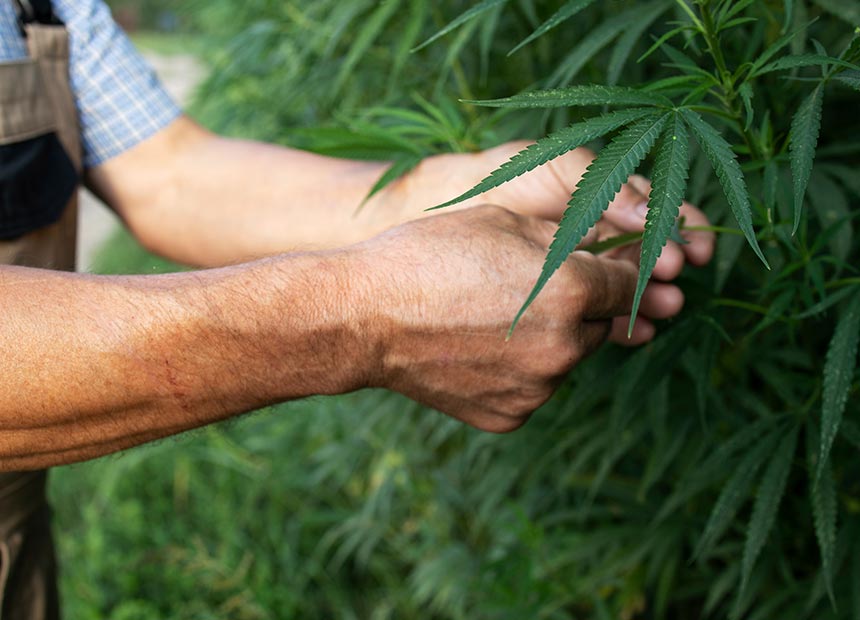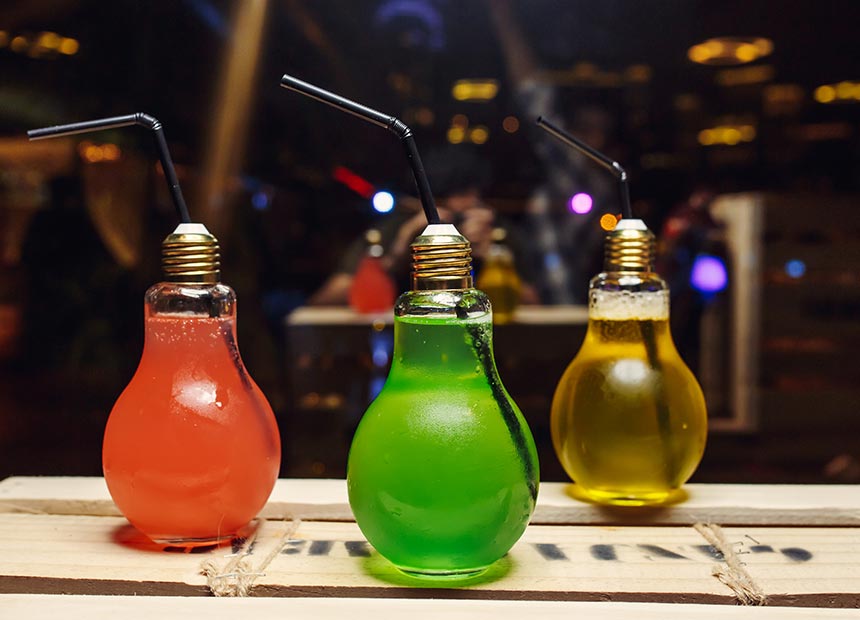Have you ever pondered the words “indica” or “sativa” on cannabis packaging? As two of the most storied names in cannabis history, they’re worth knowing about…but not in the way you might think. While many cannabis users ask “What is stronger, sativa or indica?” the real question should be “What’s the difference between sativa and indica?”
In today’s post, we’ll answer just that, explaining the differences between sativa and indica as well as sharing some more effective ways to assess the relative strength of a cannabis strain or product. By the end, you’ll be an expert in indica and sativa differences. Just as important, you’ll be able to share reliable, authoritative cannabis information with others. Because here at Green Goods, that’s what we’re all about.
Ready? Let’s get rolling!
The Difference Between Indica and Sativa: Understanding Terms
Believe it or not, we humans have been categorizing different types of cannabis for hundreds—if not thousands—of years. One of the original cannabis types we know of—the famous Kush family of strains—hails from the mountainous lands of the Hindu Kush, where its relaxing effects have been renowned for at least 2,000 years.
But so far as we know, back then, cannabis farmers weren’t necessarily categorizing different strains, also known as cultivars. That began to happen in the last few hundred years. Following the lead of Swedish botanist Carl Linnaeus—who first identified psychoactive cannabis plants as “cannabis sativa” in 1753—European botanists began using the terms “indica” and “sativa” to describe cannabis plants based mainly on their physical characteristics.
In those days, “sativa” referred to the tall, stalky, treelike hemp plants grown mainly in Europe and Eurasia for their fiber and their seeds. “Indica,” on the other hand, was used to describe the bushy, shrub-like plants with psychoactive properties grown in southern and central Asia.

Fast forward to today, and those labels are more commonly used as a shorthand to distinguish between the subjective effects of different types of cannabis strains. What are those effects, and is one truly stronger than the other? We’ll dive a little deeper into that question next, but prepare yourself: As we hinted earlier, you may find that the difference between sativa and indica and how each type affects us may be less clear than we’d like to think!
Sativa Effects: The Livelier, More Energizing Side of Cannabis
If you’ve ever chatted with one of our budtenders, you might have heard that sativa strains are often described as being “energizing” or “cerebrally stimulating.” Because they are associated with a burst of euphoria or a creative buzz, many people choose them for inspiration and energy, while medical cannabis patients trust them to help relieve symptoms of anxiety, stress, and depression, among others.
For these reasons, sativas are often described as “daytime strains.” That’s not to say they can’t be enjoyed after dark, but some people find that their energizing qualities interfere with bedtime. Botanically speaking, sativa plants tend to produce fewer flowers than indica plants, and they have a slightly different appearance. Many cannabis pros claim they can recognize harvested and cured sativa flower just at a glance: It tends to be long and cylindrical, whereas indica flower tends to be more squat and rounded.
Indica Effects: The Relaxing and Soothing Side of Cannabis
In comparison with sativas, indica plants are often described as imparting a heavily relaxing, body-centered psychoactivity. Some people think of these relaxing sensations as the more “classic” effects of cannabis, though in our experience, that’s typically more of a question of personal preference.
One thing’s for certain: Engaging with a pure indica such as the aforementioned Kush, Afghani, or Northern Lights will tend to give you a dreamy, highly relaxed, and pleasingly sedated feeling. That’s one reason they’re often described as being “nighttime strains.” Again, there’s no reason they can’t be enjoyed in daylight, but many find those relaxing effects can interfere with productivity or important tasks.
Difference Between Indica and Sativa: More Ways to Understand Effects
Now that you’ve got a basic understanding of how the terms sativa and indica are used to describe effects, let’s dive a little deeper.
In our experience, a more nuanced way to understand cannabis strains and predict their effects is by assessing their cannabinoid and terpene profiles. Let’s begin with cannabinoids, often described as the major “active ingredients” in cannabis.
Cannabinoids: The Plant’s “Power Players”
Cannabinoids are a family of more than 100 compounds found in the cannabis and hemp plants. You’ve probably heard of the most famous ones: THC (tetrahydrocannabinol) and CBD (cannabidiol). THC is the major source of the cannabis plant’s distinctive euphoric “high,” but that’s not all it’s responsible for. Studies suggest that THC helps relieve pain, can soothe nausea and stimulate our appetites when we’re undergoing treatment for cancer or other diseases, and may help treat insomnia, among other effects.
Then there’s CBD. Compared with THC, CBD isn’t intoxicating—although some people describe it as imparting a gentle cerebral “buzz.” To date, a large and growing number of clinical studies demonstrate its effectiveness in treating pain and inflammation, anxiety, and certain types of seizures, among several other beneficial effects.
That’s not to mention the many minor cannabinoids whose secrets we’re only now unlocking. CBN (cannabinol), for instance, imparts antibacterial and other effects, and CBG (cannabigerol) has been shown to have a beneficial effect on inflammatory bowel disease (IBD) and neurodegenerative diseases such as Alzheimer’s and Parkinson’s.
Terpenes: Where Cannabis Gets Its Aromas and Flavors
Then there are the terpenes, the volatile oils found in many plants and other natural products. Terpenes are aromatic and flavorful, which play a deciding role in how a given cannabis strain smells and tastes. Myrcene, for instance, is believed to be a major contributor to “the weed smell,” while limonene adds a distinctive citrus note to many strains.

Over and above this, many cannabis experts believe that a given strain’s terpene profile also influences your overall consumption experience. But our understanding of this phenomenon is still evolving, and because of the bewildering complexities involved—there are over 400 known terpenes in cannabis—comparing the terpene profiles of cannabis strains isn’t a straightforward proposition. For example, just because the Blue Dream strain’s dominant terpene is myrcene doesn’t mean all myrcene-dominant strains are as uplifting or energizing as Blue Dream.
Understanding the Ensemble Effect
Which cannabinoids are present in a given strain—and in what proportion—has perhaps the greatest impact on the overall subjective experience. The main actor, unsurprisingly, is THC. In general, the more THC you ingest, the greater a cannabis product’s subjective effects. But there are some complicating factors. The most noteworthy one is what’s called “the ensemble effect” (or “entourage effect”).
The basic idea is that when consumed in conjunction with one another, cannabinoids—and terpenes—produce more complex and potentially potent effects than when consumed on their own. One study suggests that terpenes such as linalool and humulene potentiate (or strengthen) the activity of certain cannabinoids. Another study from 2020 found that—like cannabinoids such as THC and CBD— terpenes can act directly on endocannabinoid receptor cells in the body.
This adds weight to the belief that a strain’s terpene profile—as well as the actions of the ensemble effect—are important factors in how we experience different cannabis products. Want to go even deeper? Read more about the ensemble effect here.
Indica and Sativa Differences: How to Assess Strains
In a sense, we find ourselves right back where we started. But having digested all the information thus far, you can probably answer the question “What is stronger, sativa or indica?” for yourself. The type of cannabis doesn’t have an effect on actual strength but on our subjective experience: Many people experience sativas as being energizing and enlivening, while many people experience indicas as being relaxing, even sedative.
As we hinted earlier, at the end of the day, how we experience cannabis is a highly personal question. The labels “indica” and “sativa” remain helpful as a shorthand to describe overall effects, which is why they’re used in dispensaries and among consumers. But if it’s more helpful to lean on cannabinoid and terpene profiles, by all means do. At the end of the day, we believe they’re a more accurate and useful way to categorize the complex, wild, and wonderful plant we all know and love.
Dig Into Effects with Green Goods
Whether you use cannabis for its demonstrated medical effects or as an all-natural way to relax, we think it’s important for you to know exactly what you’re looking for. As a trusted multi-state cannabis brand, it’s our experience that when customers have access to the latest and most authoritative cannabis information, they make better purchasing decisions and experience overall better outcomes.
Are you ready to start exploring the differences between sativa and indica strains for yourself? Whether you reside in Maryland or Minnesota, the nearest Green Goods location is only a click away! If you have any other questions about indica, sativa, or hybrid strains—or any other cannabis-related topics—just ask! We’re always here to help.
